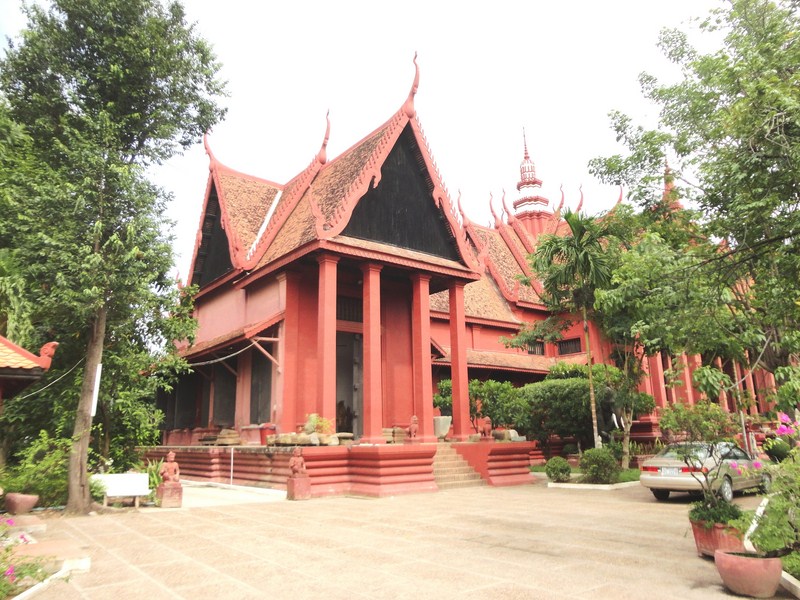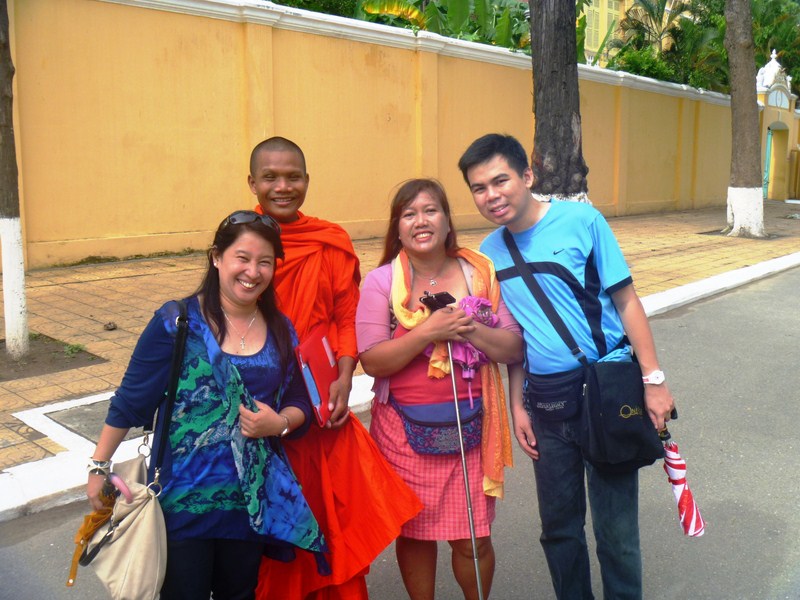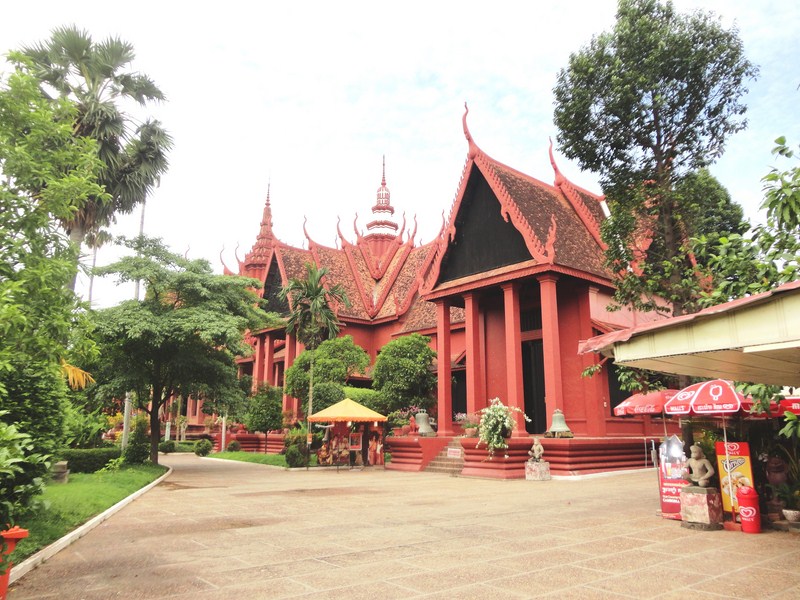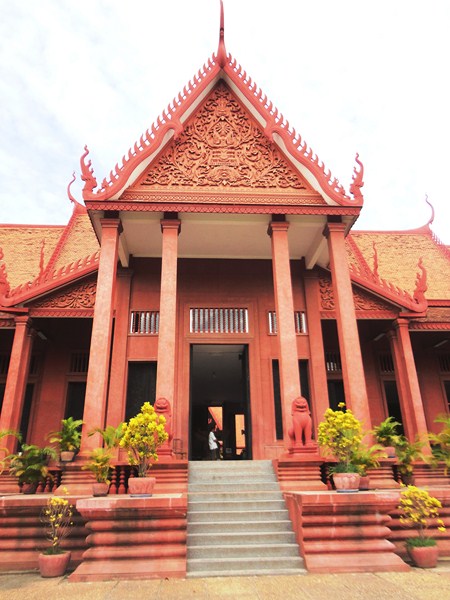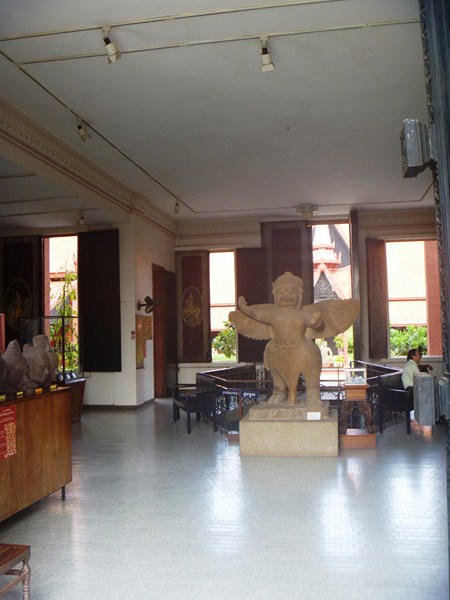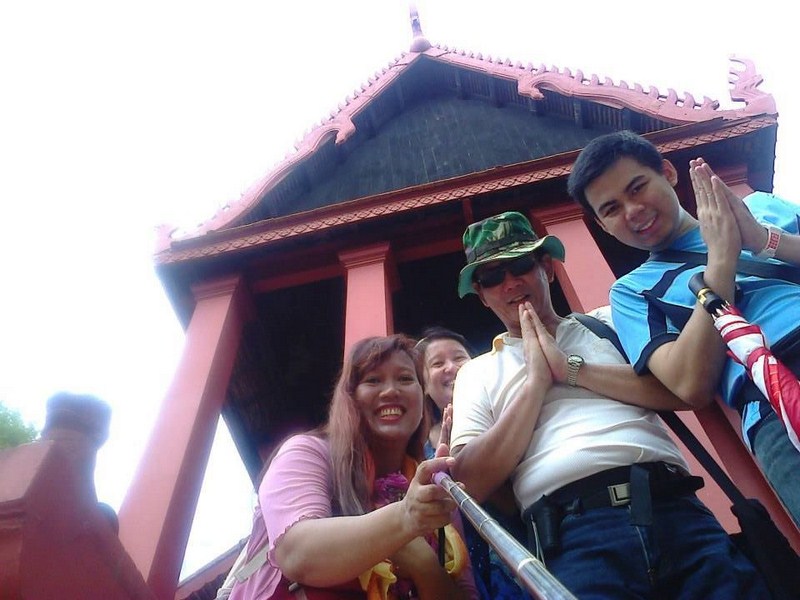Jandy and I met up with Osang and Violet while were still having breakfast at our hotel. Together, we all left for our walking tour of the city’s tourist attractions. After last night’s rain, the early morning sun was a welcome sight. Street 184, where our hotel was located, was also bounded by 2 of the city’s prime tourist attractions – the National Museum and the Royal Palace. We first headed out for the latter. Along the route, we met up and had a short chat (he spoke good English) with an orange-robed monk on his way home.
The National Museum, an excellent repository of many heritage artifacts, murals and paintings that display the talents of the Khmer people, is Cambodia’s largest museum of cultural history and the country’s leading historical and archaeological museum. The museum, housing one of the world’s largest collections of Khmer art (sculptural, ceramics, bronzes, ethnographic objects, etc.), also has a collection of over 14,000 items from prehistoric times to periods before, during, and after the Khmer Empire including the legendary statue of the “Leper King.”
Located to the north of the Royal Palace and on the west side of Veal Preah Man Square, the museum is under the authority of Cambodian Ministry of Culture and Fine Arts. On the west side of the museum is the Royal University of Fine Arts. The museum buildings, designed by French historian, curator and author George Groslier (1887–1945), were constructed between 1917 and 1924. Though inspired by traditional Khmer temple architecture seen on ancient bas-reliefs, it inevitably portrayed elements of the French style of architecture in its structures to meet the museum-size requirements.
The new museum’s foundation stone was laid on August 15, 1917 and officially inaugurated, during the Khmer New Year, on April 13, 1920 in the presence of King Sisowath, François-Marius Baudoin (Résident-supérieur) and Groslier, the director of Cambodian Arts and conservator of the museum. In 1924, to make the building even more imposing, the original building was altered by adding wings at either end of the eastern façade. On August 9, 1951, following independence in 1953, the French ceded control of the National Museum and Arts Administration to the Cambodians. In 1966, Chea Thay Seng became the first Cambodian Director of the Museum and Dean of the newly created Department of Archaeology at the Royal University of Fine Arts. The museum was renovated in 1968.
During Khmer Rouge regime of 1975-79, the museum, along with the rest of Phnom Penh, was evacuated and abandoned and many of the museum’s employees also lost their lives. When the Khmer Rouge were ousted, the museum was found in disrepair; its roof rotten and home to a vast colony of bats, the garden was overgrown and its collection in disarray, with many objects damaged or stolen. The museum was quickly tidied up and repaired and, on April 13, 1979, was again reopened to the public. In 2000, the Post-Angkorian Buddha,a permanent exhibition supported by UNESCO and a number of individuals and local businesses, was opened to extend the religious function of the museum.
National Museum: Street 13, Preah Ang Eng, Phnom Penh, Cambodia. Tel: +855 23 217 643. The visitor’s entrance to the compound are at the corner of Streets 13 and 178. Multi-lingual tour guides are available. Photography is limited. Open 8 AM – 5 PM. Admission: US$5/pax.

